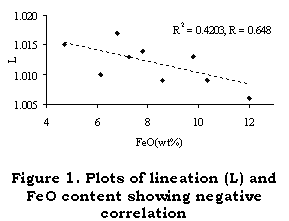Submissions
Submission Preparation Checklist
As part of the submission process, authors are required to check off their submission's compliance with all of the following items, and submissions may be returned to authors that do not adhere to these guidelines.- The manuscript should comply with the focus and scope of JATI
- The manuscript has not been previously published, nor is it before another journal for consideration (or an explanation has been provided in Comments to the Editor).
- The submission file is in Microsoft Word document file format.
- Where available, URLs for the references have been provided.
- Manuscripts must comply with the following guidelines and be formatted according to the JATI submission template. The paper which does not comply with this requirement may be returned for revision (format/template) before entering the review process.
- The text is single-spaced; uses a 12-point font; employs italics rather than underlining (except with URL addresses); and all illustrations, figures, and tables are placed within the text at the appropriate points rather than at the end.
- The text adheres to the stylistic and bibliographic requirements outlined in the Author Guidelines. and uses the Mendeley application for citation and referencing.
- The manuscript only could be sent via the open journal system (OJS) 3 mechanism (not by email) at the web address: https://journal.ubaya.ac.id/index.php/jati/about/submissions.
- The Editor of JATI reserves the right to edit the text contained without reducing or changing the intent of the writing.
Copyright Notice
- Copyright on articles is retained by the respective author(s), without restrictions. A non-exclusive license is granted to Akuntansi dan Teknologi Informasi (JATI) to publish the article and identify itself as its original publisher, along with the commercial right to include the article in a hardcopy issue for sale to libraries and individuals.
- Articles published in Akuntansi dan Teknologi Informasi (JATI) are licensed under a Creative Commons Attribution-ShareAlike 4.0 International license. You are free to copy, transform, or redistribute articles for any lawful purpose in any medium, provided you give appropriate credit to the original author(s) and the journal, link to the license, indicate if changes were made, and redistribute any derivative work under the same license.
- By publishing in Akuntansi dan Teknologi Informasi (JATI), authors grant any third party the right to use their article to the extent provided by the Creative Commons Attribution-ShareAlike 4.0 International license.
Privacy Statement
The names and email addresses entered in this journal site will be used exclusively for the stated purposes of this journal and will not be made available for any other purpose or to any other party.











